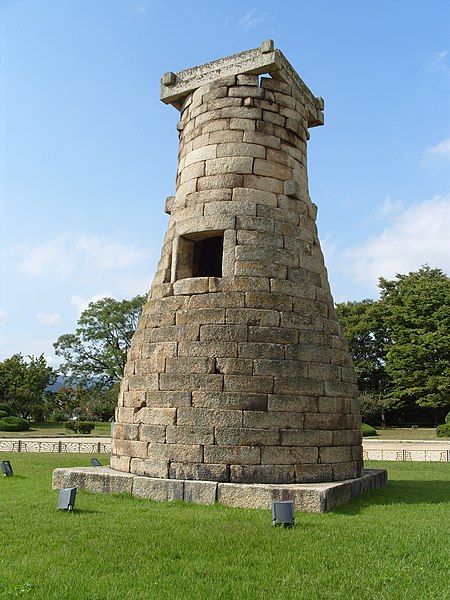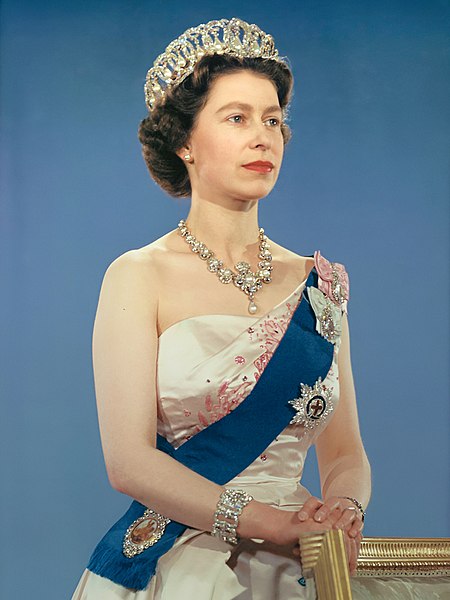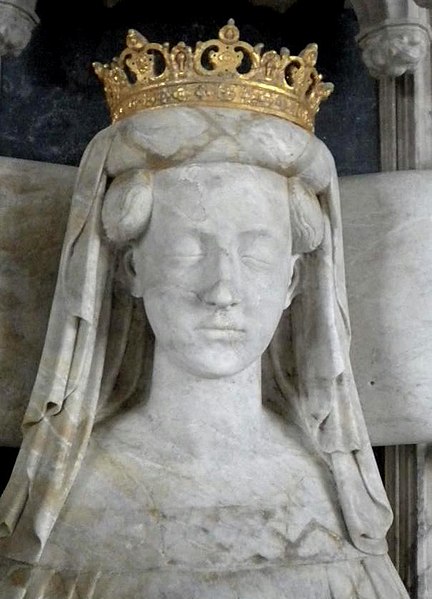Queen Seondeok of Silla reigned as Queen Regnant of Silla, one of the Three Kingdoms of Korea, from 632 to 647. She was Silla's twenty-seventh ruler, and its first reigning queen. She was the second female sovereign in recorded East Asian history and encouraged a renaissance in thought, literature, and the arts in Silla.
In Samguksagi, Queen Seondeok was described as "generous, benevolent, wise, and smart". According to the Legend of Jigwi, she was also beautiful. She developed Buddhist culture, selected great talent, and established diplomacy with the Tang Dynasty, laying the foundation for the unification of the Three Kingdoms of Korea. Queen Seondeok is known as a wise and kind monarch, making her one of the most prominent monarchs in Korean history.
Rock-carved Seated Buddha in Bulgok Valley of Namsan Mountain, Gyeongju [ko], also known as Grandmother Buddha (할매부처), was claimed that Queen Seondeok was the model for this statue by Professor Kim Ki-heung (김기흥).
Cheomseongdae, astronomical observatory in Gyeongju, South Korea.
Bunhwangsa
Tomb of Queen Seondeok [ko] in Gyeongju
A queen regnant is a female monarch, equivalent in rank, title and position to a king. She reigns suo jure over a realm known as a kingdom; as opposed to a queen consort, who is married to a reigning king; or a queen regent, who is the guardian of a child monarch and rules pro tempore in the child's stead or instead of her husband who is absent from the realm, be it de jure in sharing power or de facto in ruling alone. A queen regnant is sometimes called a woman king. A princess regnant is a female monarch who reigns suo jure over a principality; an empress regnant is a female monarch who reigns suo jure over an empire.
Queen Elizabeth II, who reigned as queen of the United Kingdom from 1952 until her death in 2022, is the longest-reigning queen regnant in world history.
Bust of Sobekneferu, the earliest Pharaoh of Egypt confidently proven to have been a woman (r. 18th/17th century BC)
Margaret I ruled Denmark, Norway and Sweden in the late 14th and early 15th centuries.

![Rock-carved Seated Buddha in Bulgok Valley of Namsan Mountain, Gyeongju [ko], also known as Grandmother Buddha (할매부처), was claimed that Queen Seondeok](https://upload.wikimedia.org/wikipedia/commons/thumb/7/7f/%EA%B2%BD%EC%A3%BC_%EB%82%A8%EC%82%B0_%EB%B6%88%EA%B3%A1_%EB%A7%88%EC%95%A0%EC%97%AC%EB%9E%98%EC%A2%8C%EC%83%81_01.jpg/400px-%EA%B2%BD%EC%A3%BC_%EB%82%A8%EC%82%B0_%EB%B6%88%EA%B3%A1_%EB%A7%88%EC%95%A0%EC%97%AC%EB%9E%98%EC%A2%8C%EC%83%81_01.jpg)


![Tomb of Queen Seondeok [ko] in Gyeongju](https://upload.wikimedia.org/wikipedia/commons/thumb/1/1b/%EC%84%A0%EB%8D%95%EC%97%AC%EC%99%95%EB%A6%8901.jpg/640px-%EC%84%A0%EB%8D%95%EC%97%AC%EC%99%95%EB%A6%8901.jpg)


